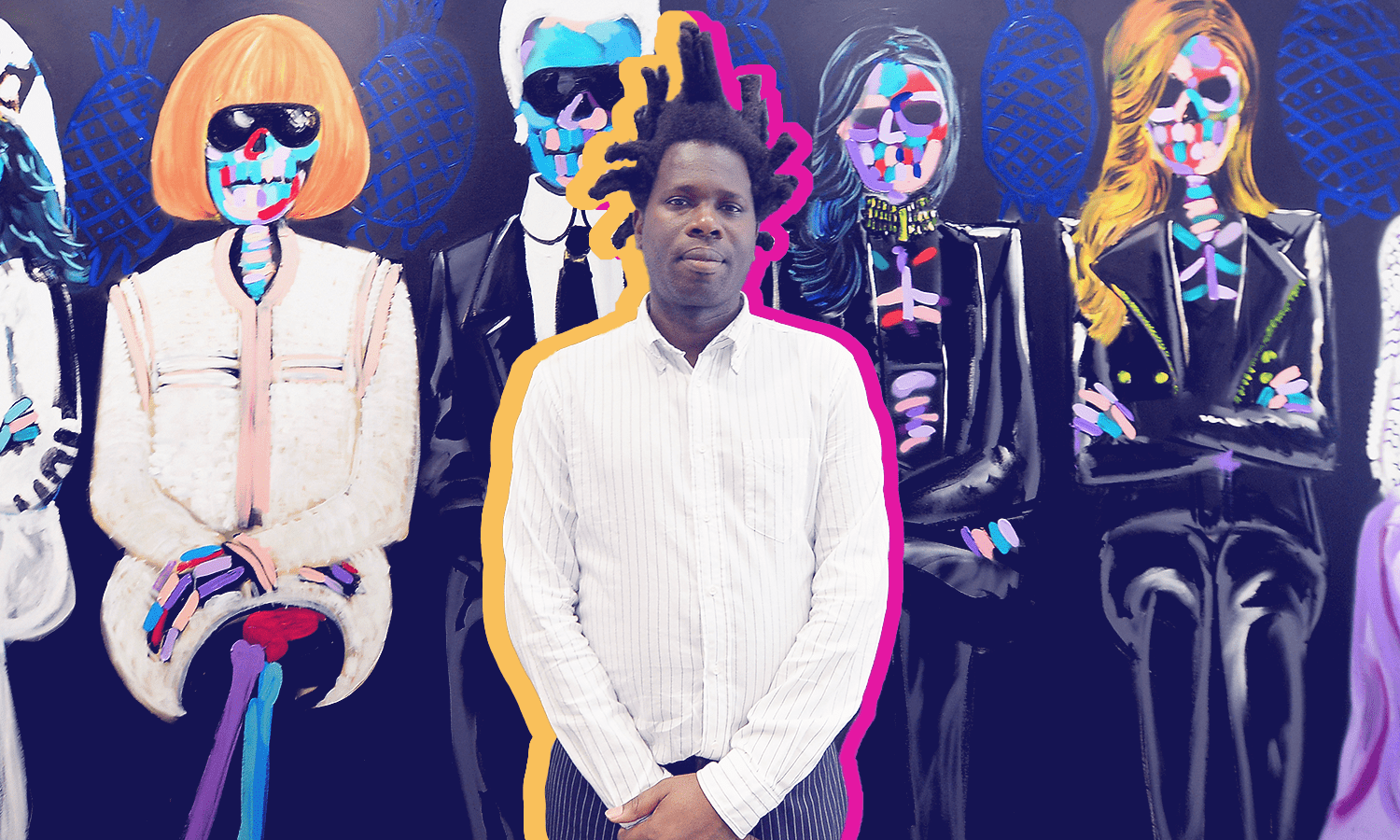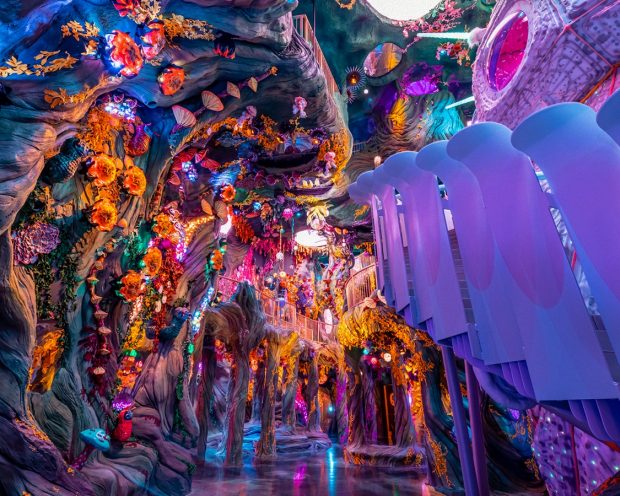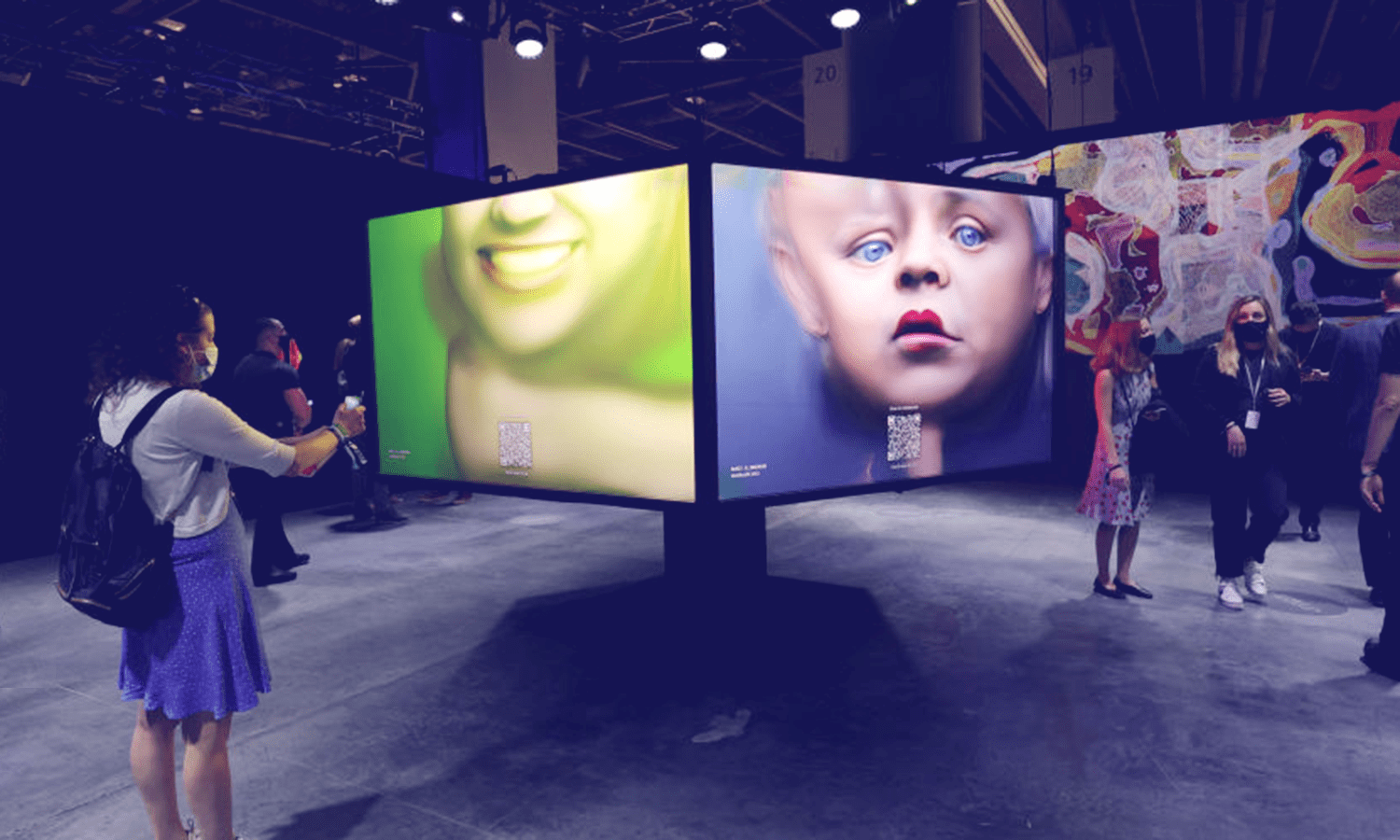When art is income: Navigating brand relationships with Bradley Theodore

Brand and artist partnerships work for many reasons. First, the artist has the chance to expand their audience beyond what they could ever achieve solo. Additionally, the brand can prove its relevance and authenticity to consumers by both supporting the arts and achieving a level of cool that doesn’t often come organically (okay, almost never comes organically).
The Turks and Caicos-born, Miami-bred artist Bradley Theodore has proved himself a master at navigating the worlds of creativity and commerce. You’ve no doubt seen Theodore’s work. His colorful paintings, prints and sculptures depict everyone from anonymous strangers to icons like Marie Antoinette and Anna Wintour. A digital designer by trade, Theodore immersed himself in the New York art scene, painting murals throughout Lower Manhattan as well as exhibiting at the Maddox Gallery.
Theodore has worked with many prominent brands — Moët, Nike, Rolls Royce, Moleskine, Monopoly, and the US Open to name a few — but how does he decide which opportunities to take? We spoke to him by phone to discuss some of his most high-profile partnerships, his advice for artists building their brands and why it’s important to remember that “coffee is not free.”
Samantha Stallard: What advice would you give to artists and creatives who are navigating brand partnerships for the first time?
Bradley Theodore: Normally in business, someone’s trying to get more than someone else. But, if you acknowledge what each of you needs to gain, you can find a win-win scenario. Artists worry about their clients, supporters and followers; they need to be sure they really connect with any brand they’re considering working with. You may not want to work with every single brand that pitches you. At the same time, you should try to find out what’s special about each opportunity, too.
SS: How should artists promote themselves to make it clear they’re open to brand opportunities?
BT: It starts with a conversation with somebody that’s connected to the brand. I have people on my team who specialize in brand collaborations. They may look at brands they’ve worked with before and say, “Hey, you know what? This would be a great person for you to work with.”
Artists also have to go to a lot of events. Most events are full of marketers and PR people, so have conversations with them. Letting them know you’re open to partnerships will open a lot of doors.
SS: How should artists charge brands?
BT: Start off by understanding that coffee is not free. Your daily essentials cost money, so when you’re talking to brands, you have to look not just at the value of your product but also at how much you really need.
A new artist starting out may charge $2,500-5,000. Someone more established may cost $15,000 and up. And then it goes up and up and up. Maybe you could look at the actual production budget for the collaboration and charge 25-30% of that. The bottom line is, you have to have enough money to buy your coffee and pay your bills. Don’t be afraid to be compensated for your work.
Your first question should be, “Am I being paid? Do you have a budget?” If the brand says no, then you have to determine whether it’s worth it.
The backbone of every company in our society is art. If you sell a digital service, artists designed your interface. If you sell a product, artists built it. Art is the backbone of our society, so when we support artists we support everyone.
SS: Describe your experience as Google’s virtual reality artist in residence. How did that partnership form and evolve?
BT: I studied 3D animation and interactive programming at the School of Visual Arts, so I’m originally a digital artist. Then I went into painting. I knew a little about the technology Google was using, and there was a great synergy. A lot of the people in that division of Google are the alternative artsy types who really love what they do, so I was excited to work with them. To this day, I still have great friendships with some of them.
SS: There’s a job for you at Pixar if you ever want it.
BT: If Pixar calls, I’m not against that. Pixar, please call me.
SS: And working with these high-profile brands exposes more people to art.
BT: Especially people who may not know they like art. I’ve met people who have never thought much about art, and they tell me, “Wow, I saw your work. I really loved it. Now I’m actually participating in the art world and going to shows.” I met someone who went to Art Basel for three years and never went to a show. They just went to the parties. I said, “Look, we can’t be friends unless you come to a show.”
SS: How was your experience at last month’s Miami Art Week? What was the atmosphere like compared to years past?
BT: The Shutterstock collaboration was my first event this season. I usually avoid Art Week, because I find that most events are just parties and people don’t even look at the art. So when I had the conversation with Shutterstock, I said I wanted to do something different. I always do my shows in New York and London, and they’re different from regular art shows. I try to create a vibe.
I didn’t want to do the same old, same old. We grabbed the villa at the W Hotel, one of the best venues for that week. We wrapped the wall to create a garden, an environmental experience where attendees entered the world of Bradley Theodore and Shutterstock. We had James Goldstein come in, Rohan Marley with these fly paintings. It was just an amazing event.
SS: Is there pure art and then brand art?
BT: Art has different factions and there’s a part where art meets philosophy. Artists and philosophers have always been connected. A philosopher’s edict may not be the exact same as the artist’s, but philosophers are the ones dissecting and analyzing art.
Artists are able to see things that most people can’t. We see through the illusion, so we’re able to create illusion. We have a special energy within us.
But even if you’re an artist, you have to say, “Okay, I want to continue doing what I’m doing, but I need my coffee in the morning. I am part of an ecosystem.” We should always, always help another artist achieve greatness. Artists have to look within and say, “These are the people who came before me. Now I have to do at least what they’ve done, or better.”
Follow Bradley on Instagram, watch his documentary “Becoming: Bradley Theodore” and browse his work and collaborations at bradleytheodore.com.
Join us in XP Land. A community for experiential creatives and experience-makers, brand leaders and IP-owners, space stewards and venue visionaries — all of those in the business of epic gatherings and live, immersive storytelling.

